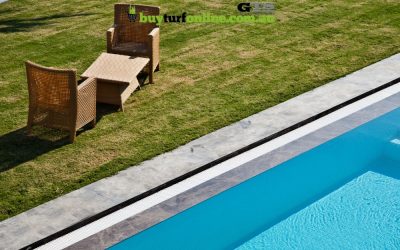Walking the Tightrope for pH-erfect Soil
1
JULY, 2017
DIY
Lawn Care
You’re stuck, blindfolded, taking one step at a time on a never-ending rope, one foot in front of the other. Okay, so maybe the pH level of your soil isn’t exactly like a tightrope. But it does make a stark difference to how well your lawn is able to grow. Before you lay new turf, or when you notice that your lawn isn’t thriving as it usually does, you should check the pH levels of your soil. Even just doing a test every so often (about once a year) helps you catch any underlying problems before they surface.
A pH imbalance is most often caused by fertiliser, water, drainage among other leaching issues. Over a year or so, a slight imbalance can add up to create a significant difference.
The pH scale consists of a little more than a rope and empty air on either side. pH stands for Potenz Hydrogen, the potential/power of Hydrogen and is a scale of acidity from zero to fourteen. Anything below seven is considered acidic and anything above is alkaline. Seven, itself, is neutral.
If you were to bear with me and we could say that this was a tightrope situation, the rope for you to walk on is pretty wide. The optimal range for most lawns is between six and seven. Outside of this range, your lawn will struggle to absorb nutrients. So that’s two points out of the fourteen that your soil can happily walk along. Having this balance to start with is quite important while you are laying new turf as your lawn may struggle to establish.

The test itself isn’t difficult. It is much easier than stepping blindly in front of you, checking that yes, the rope does continue this way. For a pH test, you will want to dig down 100- 150mm a few spots around your garden. Taking a sample from each spot, mix it all up in a bucket. By doing this you will get an average and you’ll be able to determine the overall health of your soil. A test will mean you aren’t in the dark.
Perhaps you’ve realised that your foot is resting slightly to either side of the rope. Now is the time for you to rectify this.
If your lawn is too acidic (below seven), apply lime or dolomite. If your lawn is already established, you should apply these over two to three applications to avoid shocking your turf.
If the soil is alkaline (above seven) you can treat it with sulphur or a sulphate.
By carrying out this process over a few weeks, and testing your soil in between, you can monitor your soil back to a healthy, neutral state.
Are you ready to walk the very wide, well-lit tightrope that give you plenty of warning before you tumble down over the edge?
Recommended for you...
Poolside Turf: Choosing and Maintaining Grass Around Pools
There’s nothing quite like stepping out of a swimming pool onto soft, lush grass. But when it comes to finding the best grass for around a pool, not all lawns are created equal. Chlorine pools, heavy foot traffic, and the unforgiving Australian sun can take a toll on...
The Best Parks & Playground Turf for Kids, Pets & Families Across NSW
Creating safe, welcoming, and enjoyable community spaces starts from the ground up. Whether it’s a local dog park, an outdoor playground turf project, or a family BBQ area, choosing high-quality natural grass makes all the difference. Natural grass doesn’t just look...
Keeping Your Lawn Green and Healthy During the Summer Heat
Discover the best grass options for your lawn with our complete guide. Make informed choices for a lush, healthy yard. Read more to find your ideal grass!



